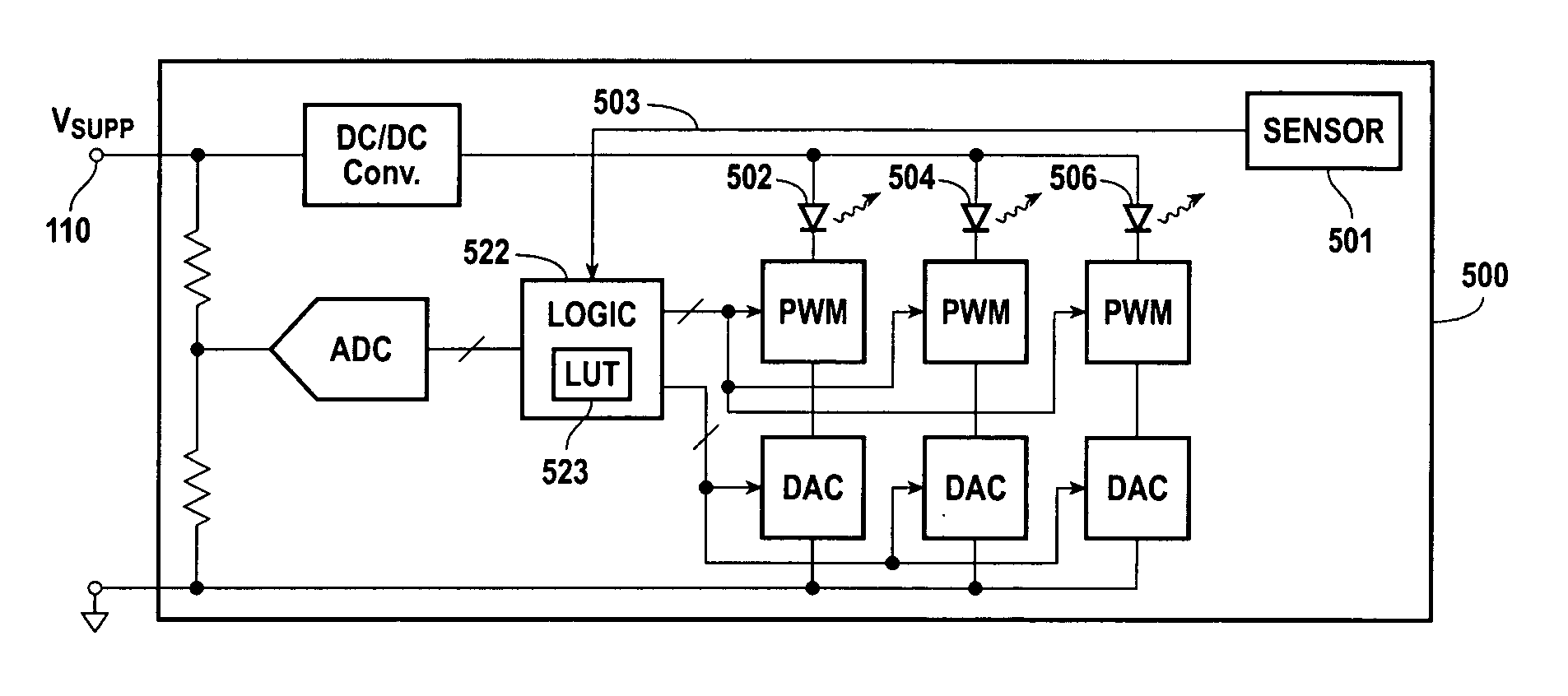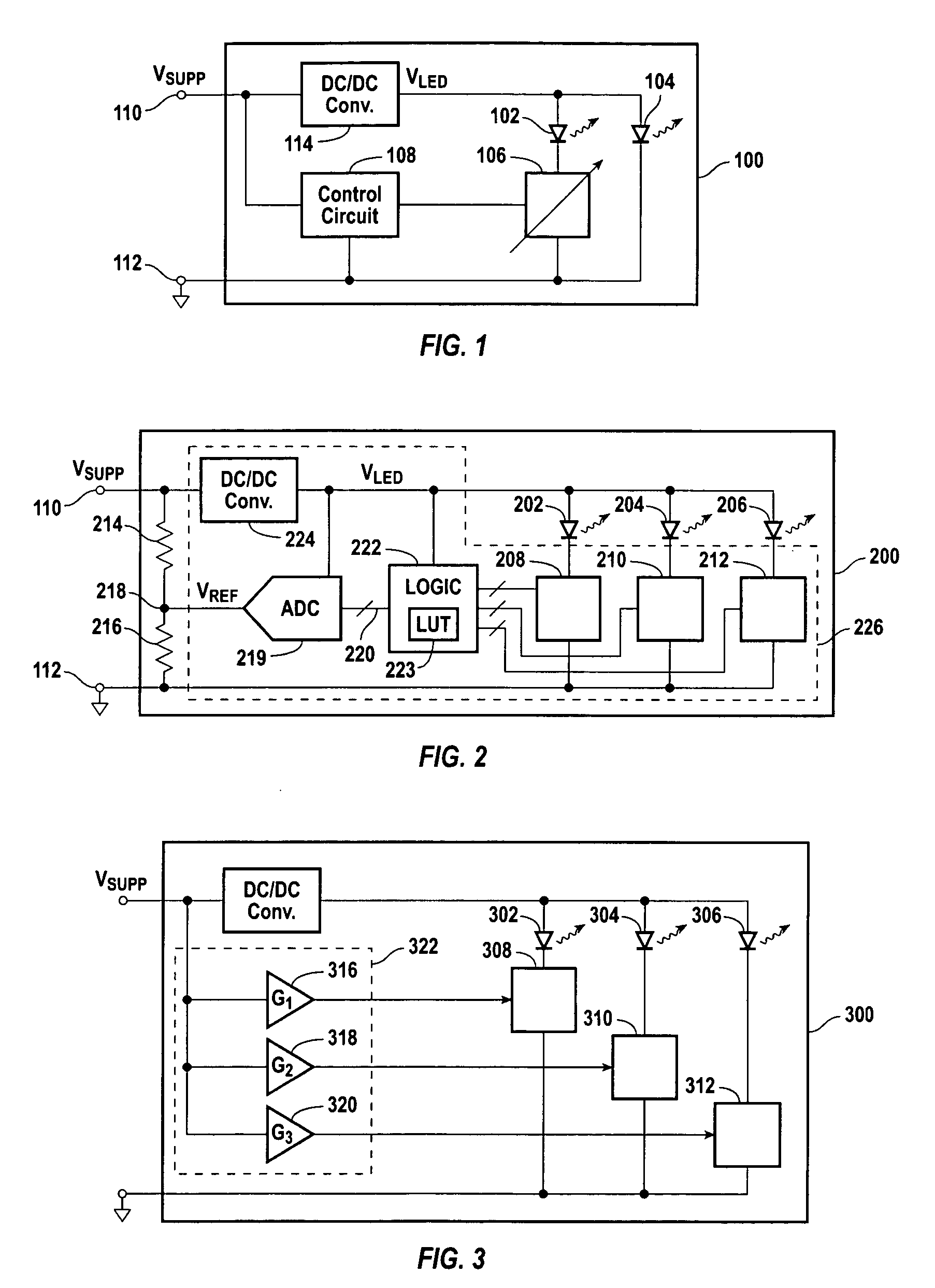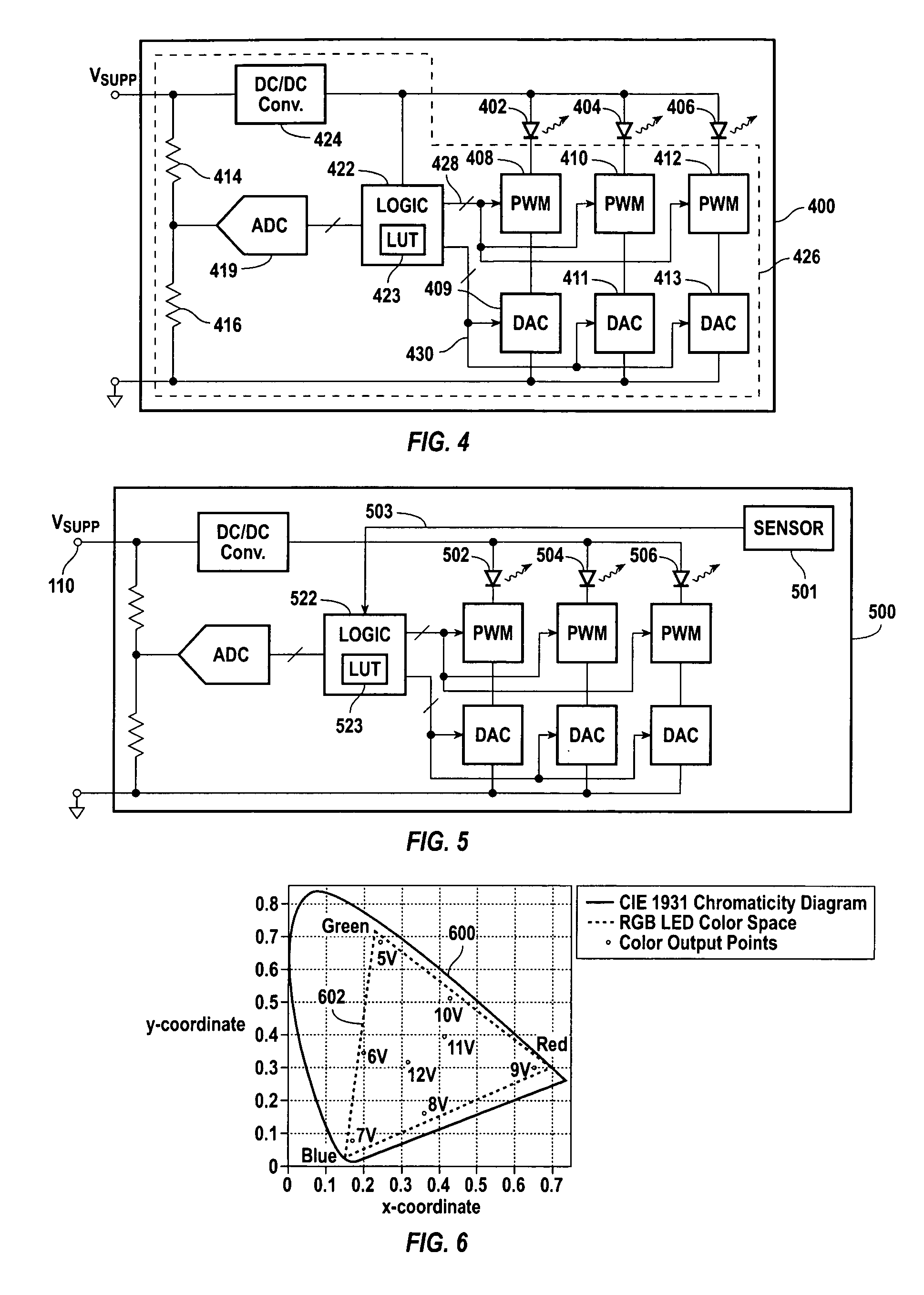Two-terminal LED device with tunable color
a technology of led devices and terminals, applied in the direction of basic electric elements, electrical equipment, lighting and heating apparatus, etc., can solve the problems of inconvenient and complicated user generation and application of control signals for each led independently, and the inability to tune the color output of the modul
- Summary
- Abstract
- Description
- Claims
- Application Information
AI Technical Summary
Benefits of technology
Problems solved by technology
Method used
Image
Examples
Embodiment Construction
I. An Exemplary Color-Tunable Two-Terminal LED Device
[0018]FIG. 1 is a diagram of a two-terminal LED device 100 according to an embodiment of the invention. The two-terminal LED device 100 has a first color LED 102 and a second color LED 104. In other words, the first color LED 102 emits light of a first color (e.g. red) and the second color LED 104 emits light of second color (e.g. green). The light emitted by the first color LED 102 and the second color LED 104 is combined to form a total combined emission having an intermediate color (e.g. yellow).
[0019] The light output can also be controlled using the drive voltage supplied to an LED; however, the I-V characteristics of an LED mean that small changes in voltage cause large changes in current. Since light output is determined by current flowing through the LED, it is generally desirable that the drive voltage needs to be precise and stable. Drive current and on-time (time modulation) are two ways of reliably controlling light i...
PUM
 Login to View More
Login to View More Abstract
Description
Claims
Application Information
 Login to View More
Login to View More - R&D
- Intellectual Property
- Life Sciences
- Materials
- Tech Scout
- Unparalleled Data Quality
- Higher Quality Content
- 60% Fewer Hallucinations
Browse by: Latest US Patents, China's latest patents, Technical Efficacy Thesaurus, Application Domain, Technology Topic, Popular Technical Reports.
© 2025 PatSnap. All rights reserved.Legal|Privacy policy|Modern Slavery Act Transparency Statement|Sitemap|About US| Contact US: help@patsnap.com



